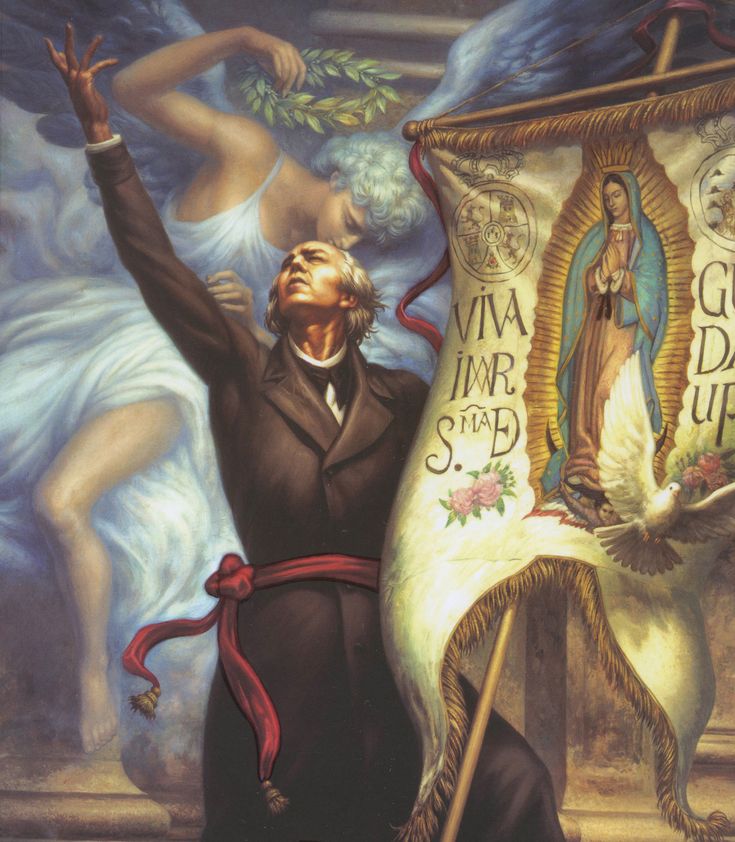The priest was nervous. He knew that his life was in danger, and he needed to act quickly.
The plan was to start some days later; but the king’s army was aware of the independence plans, and they were coming for him.
He went to his church. Everything was dark and the candlelight was not enough to find the image. That image was his hope, and he thought that by showing it to the people they would join the cause. But at that moment of the night, he started to doubt. Will Imagen of Virgin of Guadalupe move the hearts of the people to join the cause?[1] He was about to discover it.
After he found the image, he went to the tower. Once at the balcony he left the image aside and took the rope with both hands as he started to ring the Bell. It was 2 A.M.[2].
That early morning of September 16th the whole town went to the Church because it was a custom that everybody went to the church when that Bell rang, even if it rang at 2 A.M. The people saw the priest coming out of the church with a torch in one hand and the Image of the Virgin of Guadalupe arranged as a flag, in the other[3]. Everybody shut up and waited.
The priest, his name Miguel Hidalgo, started yelling so everybody could hear. He said that it was time to stop the injustice; the actual government was not taking care of the people. He yelled that after 300 years it was necessary to change the situation, and he ended yelling louder “Muera el mal Gobierno…. Viva la Virgen de Guadalupe”[4] and the whole town responded in one single voice, “Viva”. The independence war started. This moment is remembered as “El Grito” better translated as the Cry.[5]
One year later and every year since then, we remember that priest yelling to the people, and everybody responding “Viva”. The words of the Cry have changed with time, but the elements are almost the same, the bell, the Cry and the whole town responding. Virgin of Guadalupe flag is no longer used because in 1850 Mexico’s government enacted a set of laws that separated religion from state and The Cry ceremony was a government issue.
The president of Mexico is the one responsible to act as Miguel Hidalgo on September 15th [6], he rings the bell at Palacio Nacional (President´s office building) and starts the Cry. The whole act ends when the president yells three times “Viva Mexico” every time louder than before. People euphorically responds each time: “Viva”
The priest couldn’t imagine that two hundred years since then, Mexico is still struggling to find its identity. Mexico keeps fighting to assimilate his roots that come from two great Nations; Spain and Aztecs, Aztecs and Spain. Since then, Mexico is a country of Criollos, Aztecs, Spanish, Regios, Chilangos, mariachis, jarochos, latinos, migrants, catholics, atheists, etc. It is a multicultural country, no wonder why Mexico is full of color.
But every September 15th people forgets the differences, the struggles, the fights, the misfortunes and join together to respond to the Cry: “Viva Mexico”





Leave A Comment